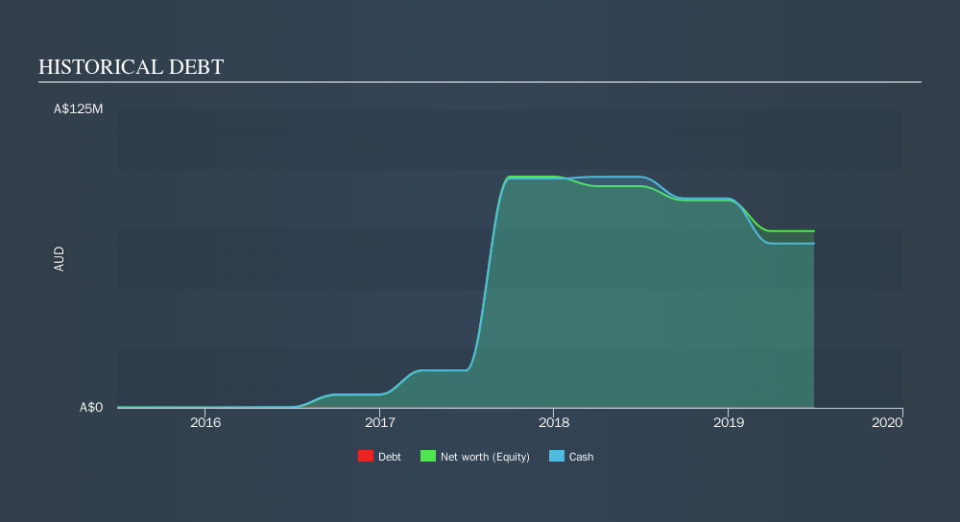Is GetSwift (ASX:GSW) In A Good Position To Invest In Growth?

Even when a business is losing money, it's possible for shareholders to make money if they buy a good business at the right price. For example, although Amazon.com made losses for many years after listing, if you had bought and held the shares since 1999, you would have made a fortune. But while history lauds those rare successes, those that fail are often forgotten; who remembers Pets.com?
So should GetSwift (ASX:GSW) shareholders be worried about its cash burn? For the purposes of this article, cash burn is the annual rate at which an unprofitable company spends cash to fund its growth; its negative free cash flow. Let's start with an examination of the business's cash, relative to its cash burn.
View our latest analysis for GetSwift
How Long Is GetSwift's Cash Runway?
A company's cash runway is the amount of time it would take to burn through its cash reserves at its current cash burn rate. As at June 2019, GetSwift had cash of AU$69m and no debt. Looking at the last year, the company burnt through AU$27m. So it had a cash runway of about 2.5 years from June 2019. That's decent, giving the company a couple years to develop its business. You can see how its cash balance has changed over time in the image below.
How Is GetSwift's Cash Burn Changing Over Time?
Although GetSwift had revenue of AU$2.1m in the last twelve months, its operating revenue was only AU$2.1m in that time period. Given how low that operating leverage is, we think it's too early to put much weight on the revenue growth, so we'll focus on how the cash burn is changing, instead. The skyrocketing cash burn up 192% year on year certainly tests our nerves. That sort of spending growth rate can't continue for very long before it causes balance sheet weakness, generally speaking. Of course, we've only taken a quick look at the stock's growth metrics, here. This graph of historic revenue growth shows how GetSwift is building its business over time.
How Hard Would It Be For GetSwift To Raise More Cash For Growth?
While GetSwift does have a solid cash runway, its cash burn trajectory may have some shareholders thinking ahead to when the company may need to raise more cash. Generally speaking, a listed business can raise new cash through issuing shares or taking on debt. Many companies end up issuing new shares to fund future growth. We can compare a company's cash burn to its market capitalisation to get a sense for how many new shares a company would have to issue to fund one year's operations.
GetSwift has a market capitalisation of AU$111m and burnt through AU$27m last year, which is 24% of the company's market value. That's not insignificant, and if the company had to sell enough shares to fund another year's growth at the current share price, you'd likely witness fairly costly dilution.
So, Should We Worry About GetSwift's Cash Burn?
Even though its increasing cash burn makes us a little nervous, we are compelled to mention that we thought GetSwift's cash runway was relatively promising. While we're the kind of investors who are always a bit concerned about the risks involved with cash burning companies, the metrics we have discussed in this article leave us relatively comfortable about GetSwift's situation. While it's important to consider hard data like the metrics discussed above, many investors would also be interested to note that GetSwift insiders have been trading shares in the company. Click here to find out if they have been buying or selling.
Of course GetSwift may not be the best stock to buy. So you may wish to see this free collection of companies boasting high return on equity, or this list of stocks that insiders are buying.
We aim to bring you long-term focused research analysis driven by fundamental data. Note that our analysis may not factor in the latest price-sensitive company announcements or qualitative material.
If you spot an error that warrants correction, please contact the editor at editorial-team@simplywallst.com. This article by Simply Wall St is general in nature. It does not constitute a recommendation to buy or sell any stock, and does not take account of your objectives, or your financial situation. Simply Wall St has no position in the stocks mentioned. Thank you for reading.

 Yahoo Finance
Yahoo Finance 
